Tillberg Design of Sweden – the Saga of Ingenious Interiors
The victorious Vikings – those ancient Scandinavian heroes – based their success massively on their advanced boat design over a dozen centuries ago. Although they craved nautical miles and plunders, their adventures weren't so luxurious.
The history of seafaring is flooded with exciting and even tragic tales, whereas nowadays we don't head for the seas to just haul and harrow. We instead get onboard for pure enjoyment – to have a five-star spare time. The ship owners know that, and so do Tillberg Design of Sweden, the world-famous ship interior design office. I had the privilege to meet and chat with their Design Director, Architect Peter Snellman – and what's more, afloat. We spent a beautiful summer day on the Schooner Kathrina, sailing in the archipelago of Helsinki.
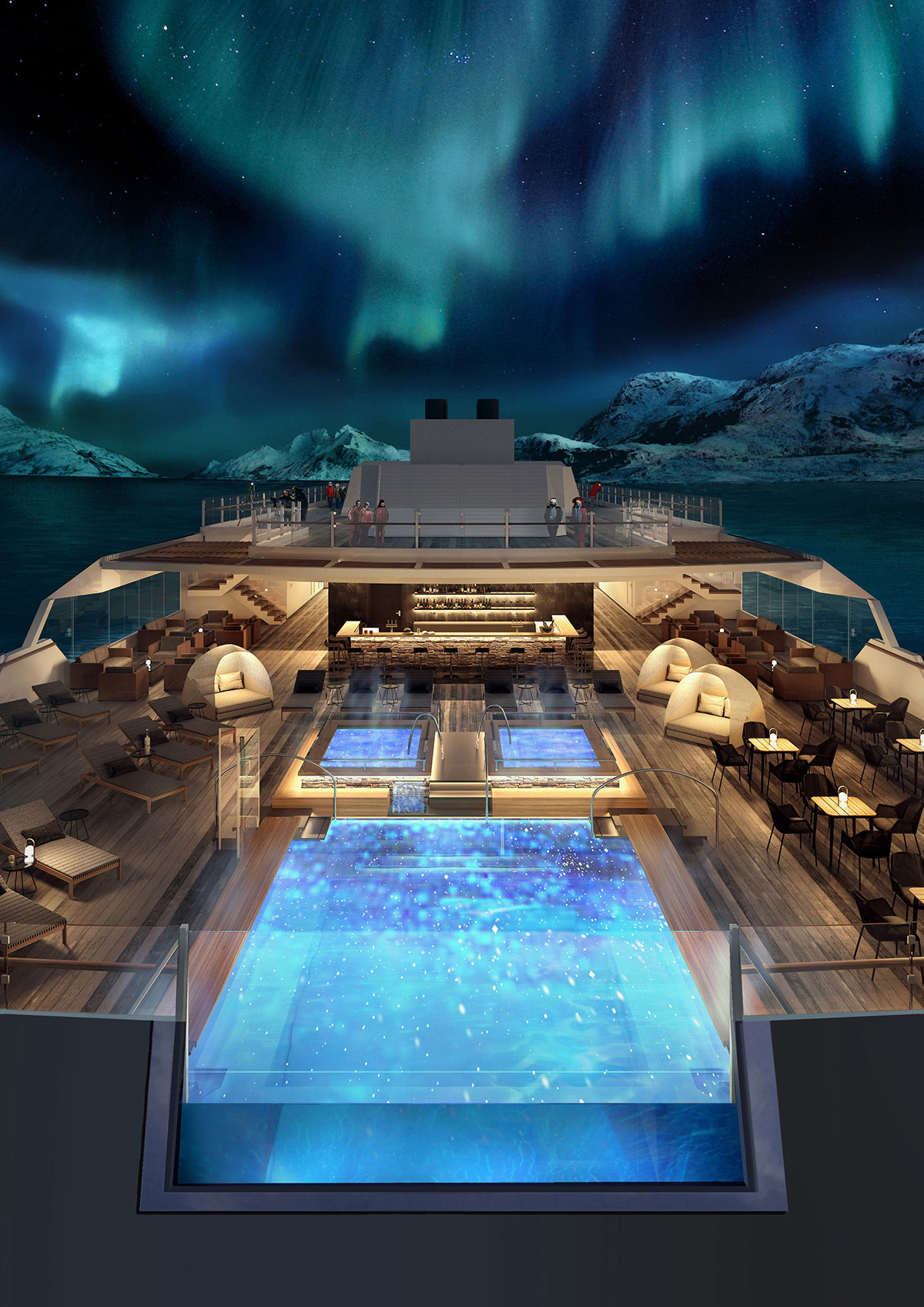
MS Roald Amundsen is a brand new, fully battery-powered Hurtigruten ferry. All pictures, unless stated otherwise: Tillberg Design of Sweden
As Lasse Mårtenson sang, "Everything but sailing is pointless," let's tack back toward the sea of memories. It's 1964, and the second wave of Finnish immigrants billow into the Swedish harbors seeking for jobs. Meanwhile, a certain furniture carpenter Robert Tillberg has big plans on the Southwest coast of "Folkhemmet," in a tiny Scanian village Häganäs. He has recently received the assignment of his dreams from the Swedish American Lines, whose upcoming flagship MS Kungsholm requires a pretty interior.
The task is demanding, but hard-working Robert comes up with a sovereign execution, leaving everybody speechless. His bow has just turned toward national stardom. As new jobs start continuously floating from the docks on Robert's desk, he founds Tillberg Design.
In the wake of a visionary
Robert's pivotal handprint was to change the whole marine industry. When he presented his idea of an atrium-type sundeck to the engineers, they laughed at it. "You cannot tear a hole in the middle of a ship for heaven's sake!" they claimed – just to be proven wrong.
After Robert's departure, Tillberg Design of Sweden has cherished his vision brilliantly. They have gradually anchored themselves as the world-leading ship interior wizards and spread out beyond oceans.
Their success has been emphasized by the continuous growth of the entire cruise business. According to Peter, the current hot spots are Hawaii, Asia and Europe.
"China will be the next huge market, whereas many European traditional areas are constantly active – like The Mediterranean Sea, The Caribbean course and even the Baltic Sea," Peter lists. He also mentions the big Finnish shipyards in Turku and Helsinki.
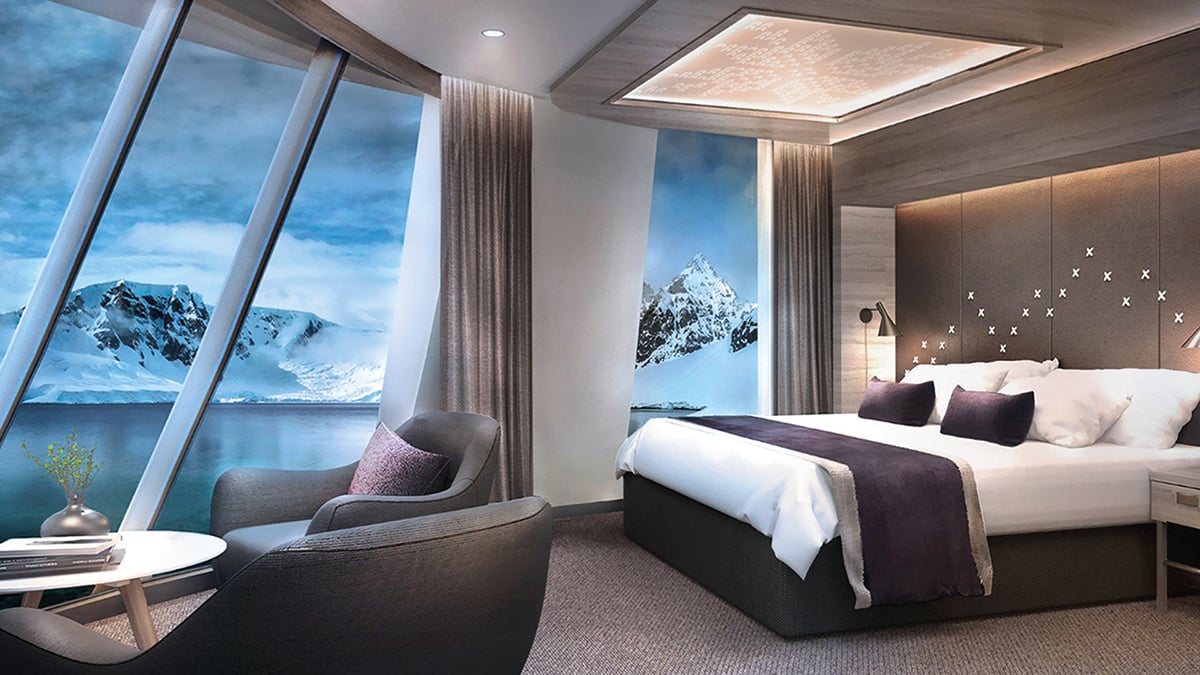
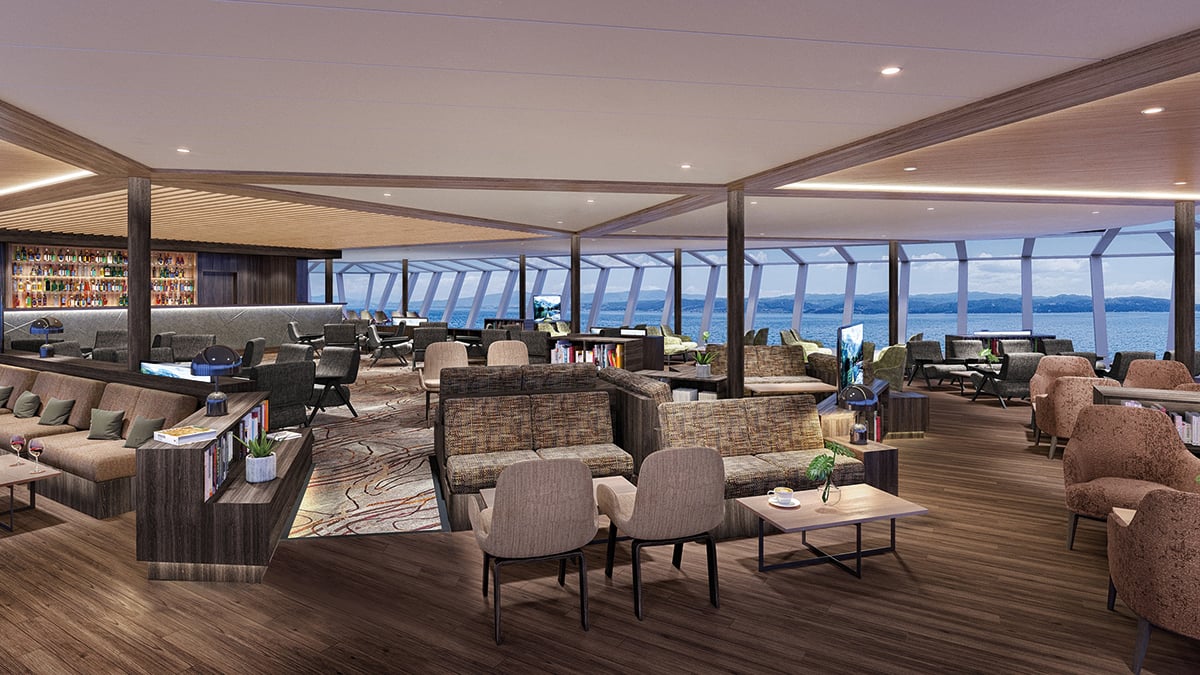
Already in 1893 established Hurtigruten ferry route connects Norway's coastal towns. Nowadays it has 35 waypoints and over a half million yearly passengers. Tillberg Design of Sweden has designed several Hurtigruten interiors. The latest MS Roald Amundsen offers an unforgettable fjord adventure for 500passengers at a time.
The Tillberg team
Accompanied by their vivid vision, TDoS have steadily developed into a hundred-headed company – and counting. Especially in the past couple of years, their need for experts has peaked. In addition to strengthening their Swedish headquarters and Polish office, Singapore and Miami have gotten their own sales departments.
"I just made a headcount and scored 116, but I guess it doesn't hold true anymore," Peter laughs.
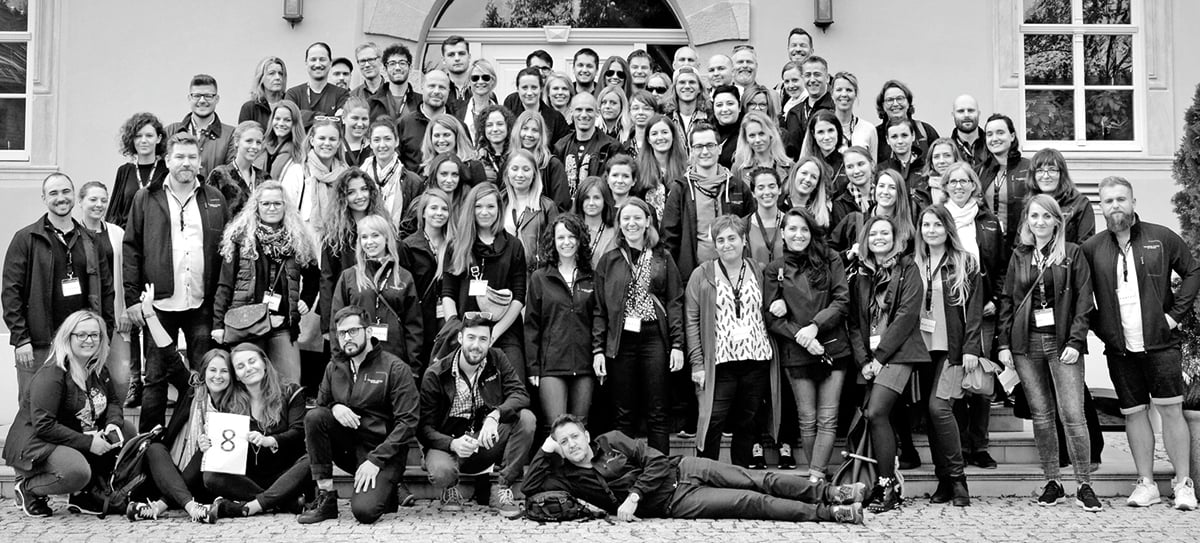
Many makers – one team. Tillberg Design of Sweden employs a growing guard of design professionals.The personnel count has exceeded the magic limit of one hundred, and TDoS relentlessly recruits new talents.
The maneuvers are quick, yet Tillberg Design of Sweden don't sail in more favorable waters without a compass. They are scoping the horizon relentlessly to avoid the shallows. Their joint command is to uphold an open conversation culture. Egos are jettisoned, and weekly get-togethers gather all hands on deck.
"We gear up for tomorrow all along, and the markets have been mapped if so to say. We update our know-how by workshops, research and team-specific development. Our efficient teams communicate very closely. However, we aren't an exceptionally flat organization – because it can be tricky as well. Teamwork and communication knit us together, as one big team," Peter sums.
Irreplaceable encounters
When a company expands enough with new staff and global branch offices, internal communication can meet some headwinds. Although modern communication instruments have set us free from the chains of time and place, not a single apparatus beats the face-to-face interaction. Anyway, Skype is a must in Tillberg Design of Sweden's transoceanic operations because endless traveling won't do. Even the Swedes haven't pulled off a teleport yet!
"It's a bit different chatting face to face than trying to solve things with a bad signal. And you don't even know what the other person is doing! The risk of misunderstanding grows even higher via email," Peter points out.
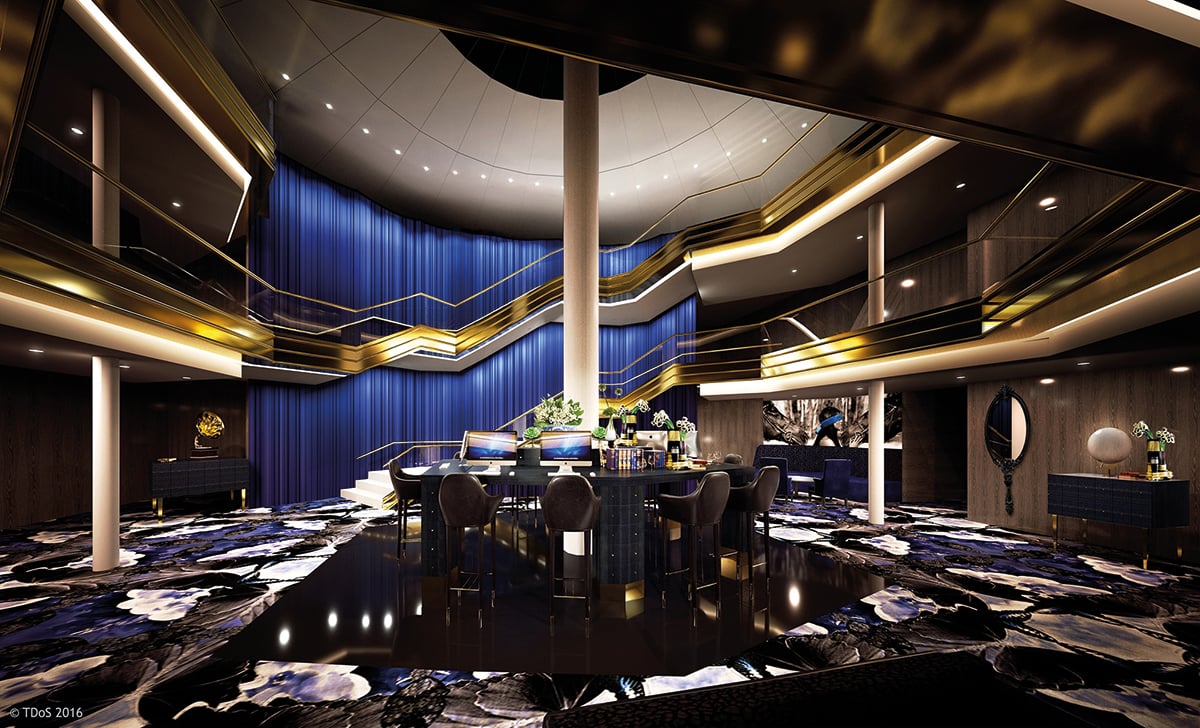
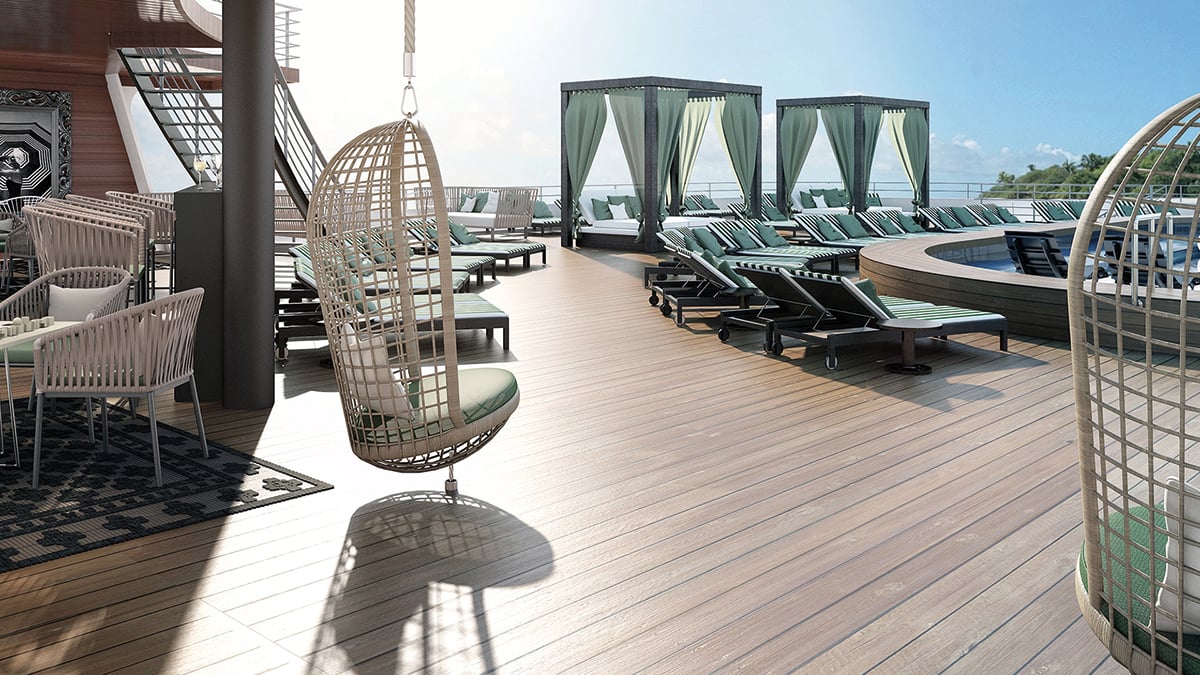
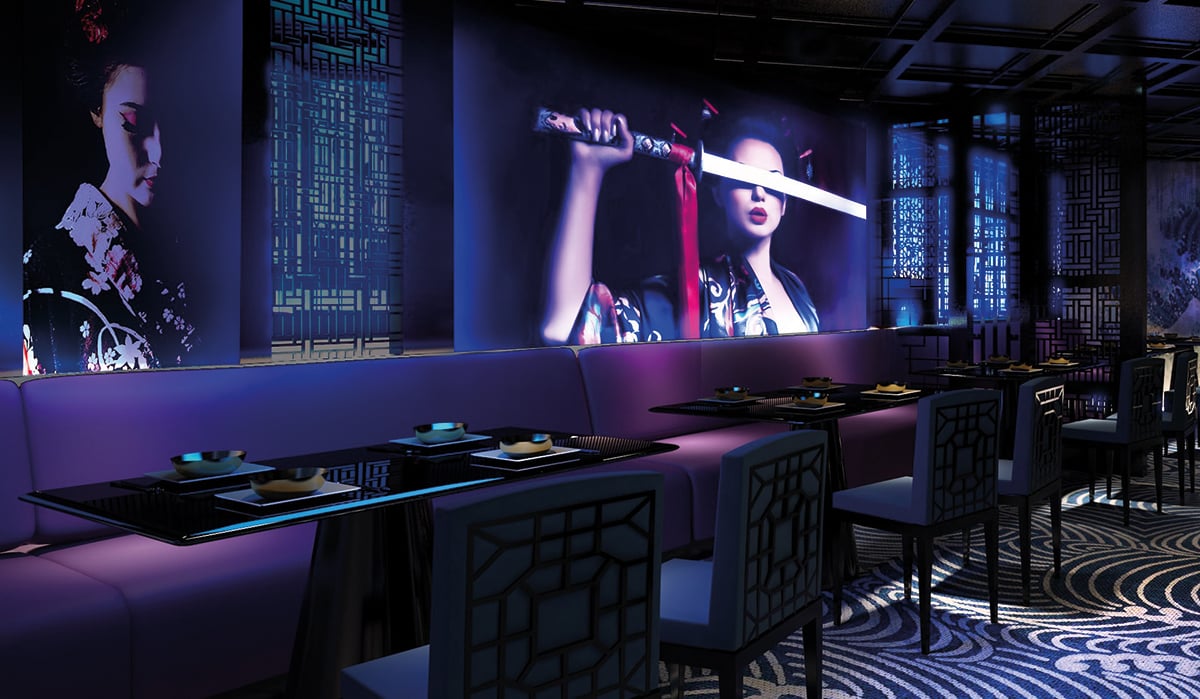
Tillberg Design of Sweden casted atmospheric interior for P&O Australia, the first cruise ship designed especially for the Australian market. The 136-ton vessel has a passenger capacity of over 4.200.
The charm of waters
The marine sector is fascinating, and even a common landlubber can make sharp observations of it: A cruise ship differs a bit from a cargo vessel. Some boats rocket to the opposite shore, while others would rather linger at sea forever. This kind of gently floating ship is loaded with experiences and elegance – and passengers who pay for them.
If a concept like this sounds superfluous, the reason may lie in some bad budget cruises you once attended – tramping in a taxfree shop and spluttering in a pub karaoke. There surely is more to it if you take a look at the gorgeous creations of TDoS.
Undoubtedly, luxury and exclusivity are still vital baits, but younger generations call for more. Eco-friendliness is a mega trend at sea, too.
"Sustainability and ecotourism require fresh thinking from designers. Food has to be ethical, plastic is avoided, and so on. What's more, we have designed sea cleaning ships, which attract volunteers," Peter rejoices.
Eco-awareness doesn't diminish the role of money – rather vice versa. Even if the number of trips dropped, there would still be more money to burn. Eco is a new luxury.
"Let's think about cars, for instance. For some, buying a Tesla is an ecological act, but it has its price tag," he ponders.
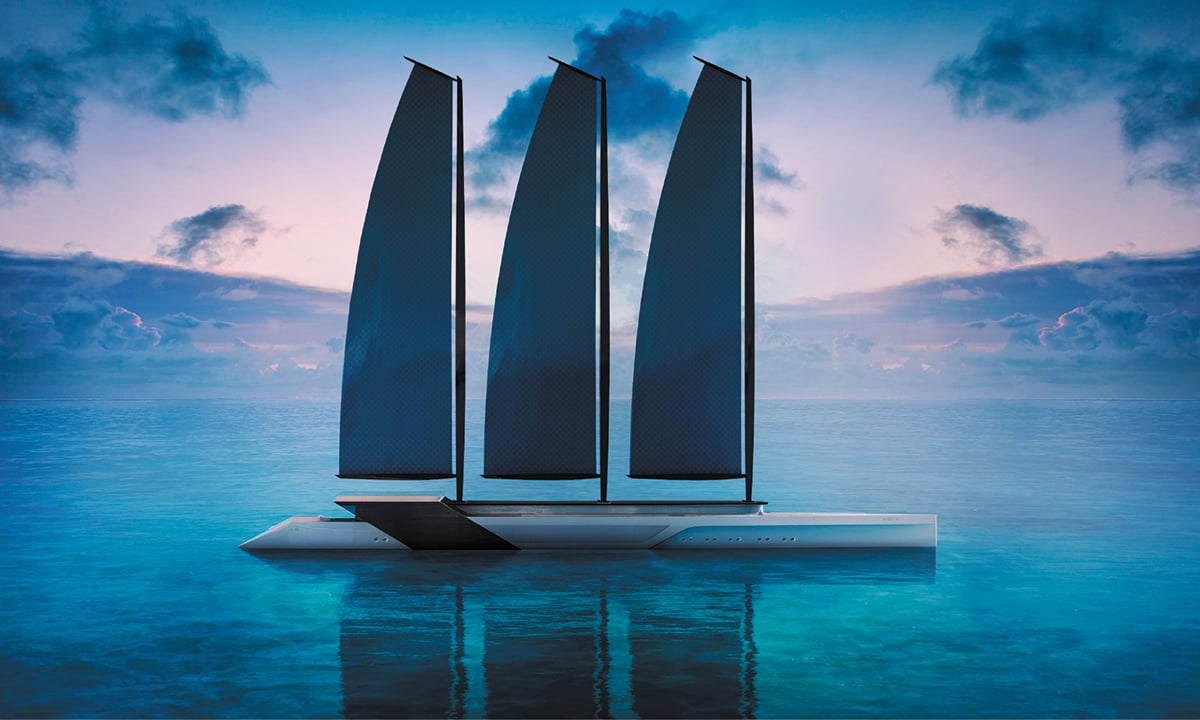
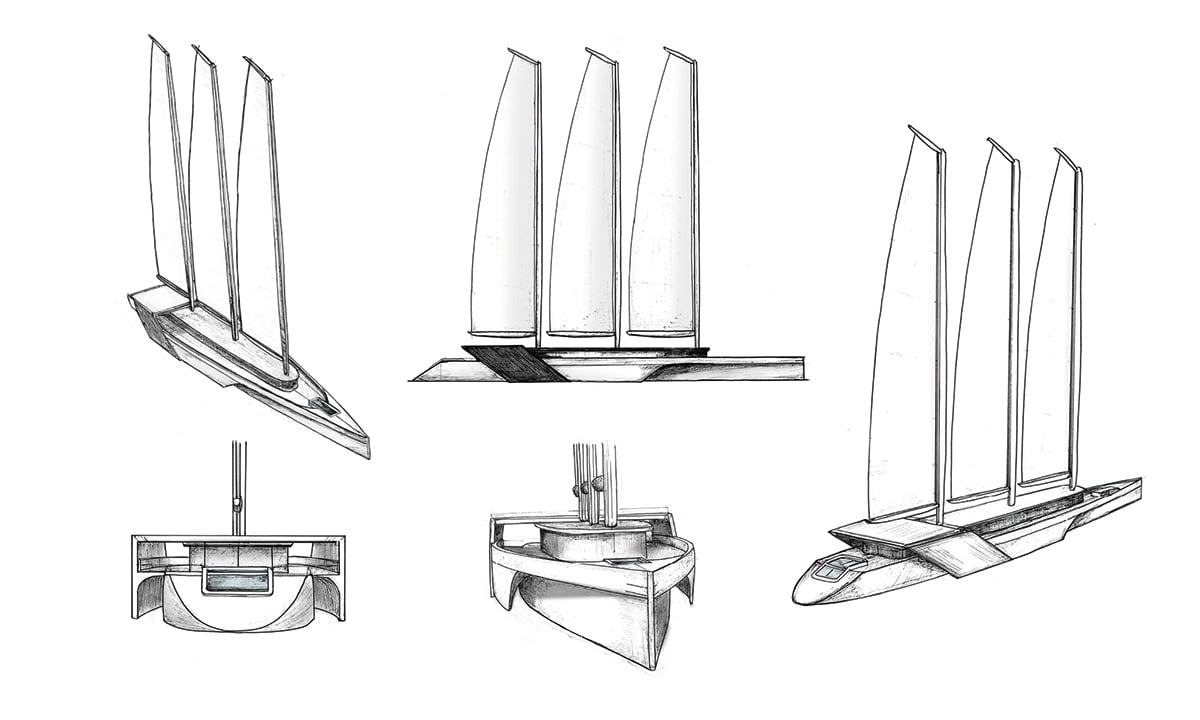
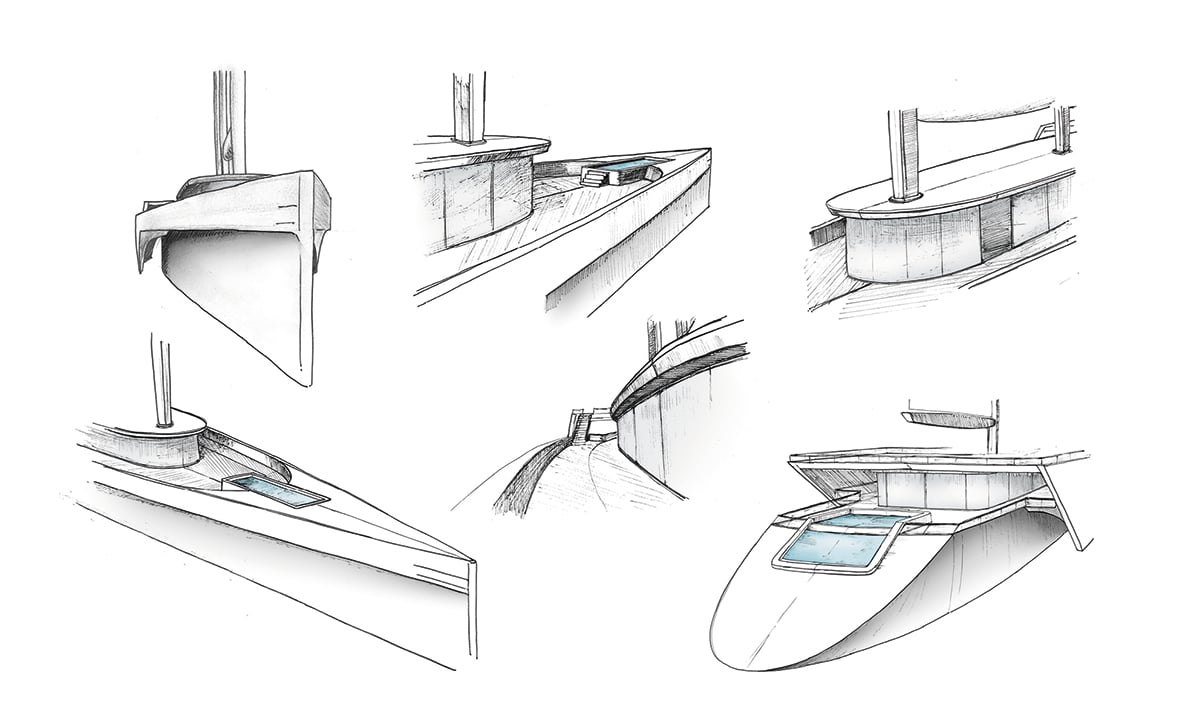
The Sun and wind are enough to carry Aegir, a new-generation luxury craft. The design of this elegant triple-mast ship is highly influenced by nature. Its sails harness both wind and solar energy. Emission-free sea traffic is trending.
Distinctive design
Styling ships is an extremely specialized field, but it obeys the same universal rules as any other design area: functionality, sustainability and beauty. For example, a buffet restaurant serves thousands of customers each day. The service should run as smoothly as butter on a pan, and the surfaces should tolerate harsh treatment. To top it all off, guests also crave delicious decorations – pleasant surroundings. The big picture is complex, and every piece needs to fit.
One mouth cannot eat the whole cake, so Tillberg Design of Sweden has established specialized studios to cut it up. One team creates public spaces, while the other delves into cabins and suites only. Also, furnishing, materials, graphics, exteriors and modernizations have their own design units.
The studios definitely have their place. Designing an entire interior for a cruise ship is a considerable effort: one space alone can easily contain fifty materials.
"With support from studios, architects can focus on the main concept and start modeling on a steady foundation. Only seamless teamwork produces the best possible outcome," Peter states.
Strengths turn into success
Tillberg Design of Sweden has planned ship interiors for more than a half-century, yet their chain of knowledge has never been broken. A thick logbook is their absolute power.
"We have veterans who have been working for Tillberg Design of Sweden since the '90s, and their experience is indispensable. And what's great, they eagerly share their know-how to their younger colleagues," Peter thanks.
TDoS's another clear competitive edge is efficiency, which stems from their smooth workflow and tight teamwork. Their portfolio and reputation bring spontaneous success, but they never hesitate to promote themselves either. Their constant presence at trade shows and in social media bear fruit quite well.
"We cannot take every assignment available, as we sure want to grow and catch the big fish," he admits frankly.
To be honest, we rarely see such strong specialization and bold promotion in the design field – at least in Finland, where customer lead management is extremely passive. I think it's basically wasting opportunities.
A chestful of challenges
Be it a smaller yacht or an entire floating spa-hotel-shopping-mall complex, the customer deserves only the best. Wishes come in all sorts: some know what they want, others ask what they want. Again, it all comes down to communication. The trust is earned by listening and getting to know each other. As Peter says, the biggest challenge is not to fulfill customers' needs, but to exceed them – time after time.
"We are always as good as our latest ship. You cannot just duplicate, not even sister ships. Every craft is its own world. Of course, it's wise to reuse the tried and tested solutions. Anyhow, we want to be the best, and mediocrity will never be enough. It's hard, but it also keeps us motivated.
To add some more riptide to a designer's life, one has to obey many regulations and restrictions. When talking about water traffic, safety is the rule number one.
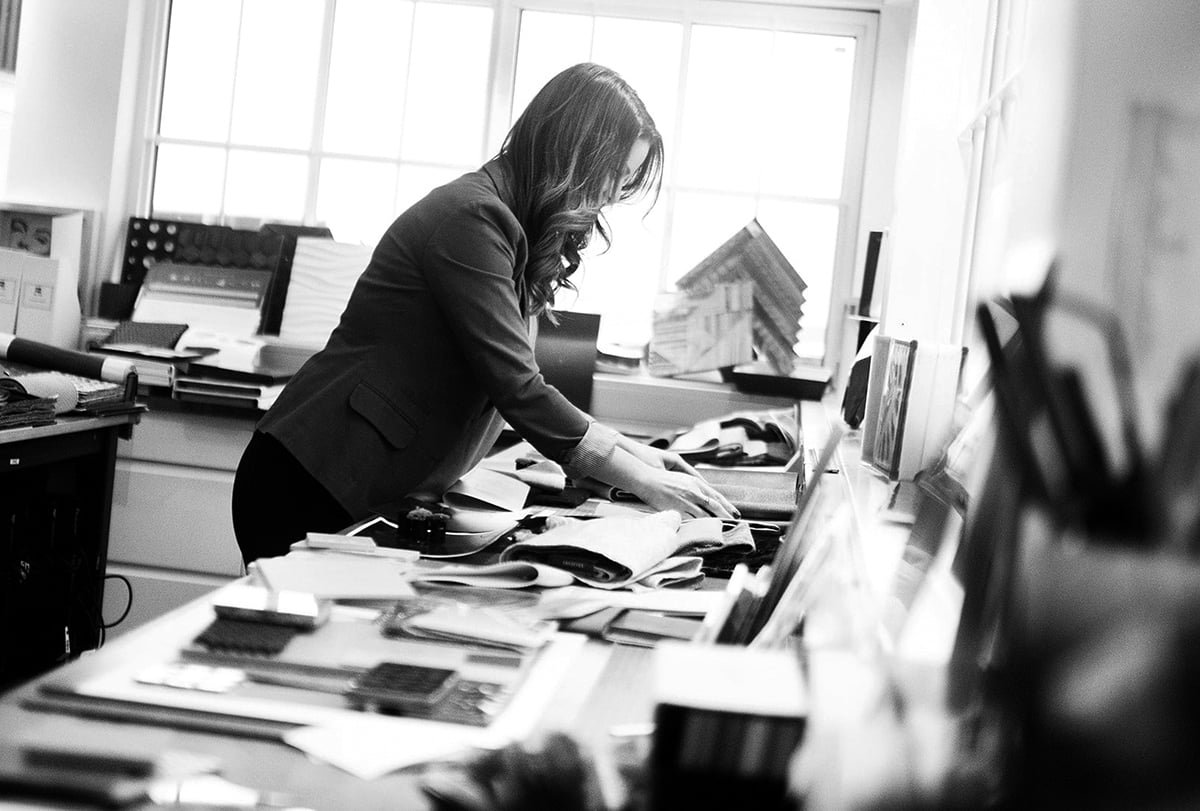
A vessel can contain hundreds of materials. Tillberg Design of Sweden have specialized studios for handling particular design fields.
Rewarding persistence
It takes five to ten years to design and build an average cruise ship, which is a terribly long time to work on a single project. Once in a while, a designer can easily fall into an abyss of details and may start to question the whole project, until it suddenly happens. The ship is finished!
"Nothing beats the feeling of getting something done after a long struggle. It gives the strength to move on to the next case. It's also rewarding when teamwork generates great ideas, and we are making progress in a collective flow," Peter enthuses.
BIM as a lifeboat
Because serious articles seldom make fun of something, I'm telling a joke. Why is it worth to 3D model ships? – Because paper can get wet!
Was it waterproof? Never mind, actually it wasn't a joke at all. Building Information Modeling, BIM, is already standard on land, but Tillberg Design of Sweden took it to sea – over two decades ago. At that time, Archicad got onboard. It turned the course to the third dimension, which was like a new continent to explore. BIM has gradually taken its place as the dominant procedure, and for the last few years, every single project has been 3D modeled.
"In fact, I came upon Tillberg Design of Sweden thanks to Archicad. I worked for the local Archicad representative called Lasercad, nowadays Nolliplan. I got the chance to guide them with the software and ended up working for them. I made it a point to boost their BIM workflow," Peter recalls.
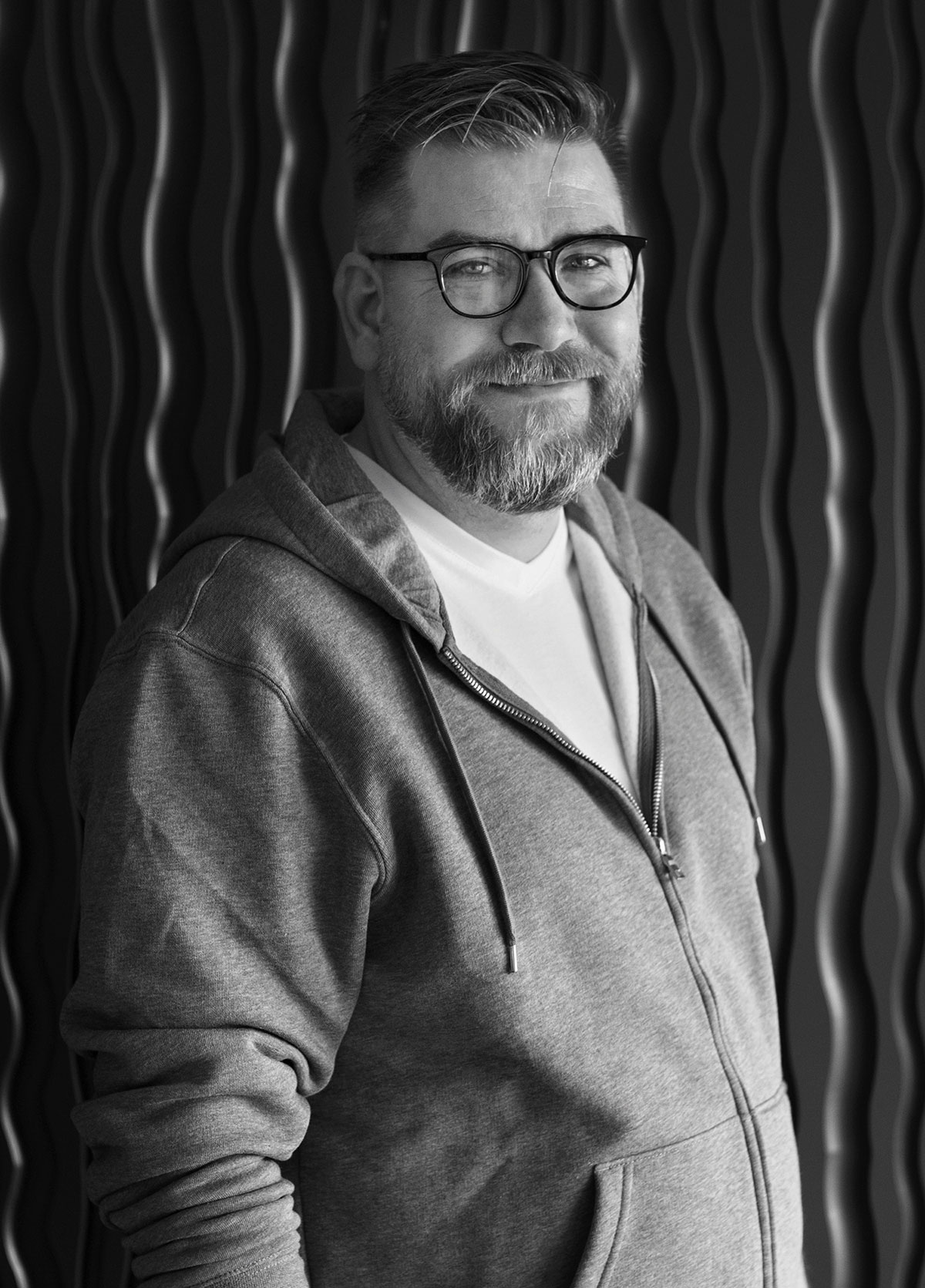
Today, Peter Snellman is one of the design directors at Tillberg Design of Sweden. Since 1998 he has beenconsulting TDoS. Finally in 2015 he returned to instill the idea of BIM: every project is modeled
Now Archicad is the core of TDoS's performance, taking part in the whole design chain from sketching to the very end. But before any sketching, a lot has already been done: the ideation. Inspiration and influences transform into big mood boards on the wall. Eventually, they form the concept. When it's time to wrap it up, Archicad opens. The rest happens in the digital modeling environment, as the pre-material has sneaked into Archicad.
The shipyard delivers the technical drawings. Practically it's a steel frame with hollow walls and decks – a blank canvas, which Tillberg Design of Sweden gets to paint.
Conserving creativity
Back in the old days, some claimed that computer-aided design would threaten creativity – and especially interior design might have been the first in line. Peter laughs at my archaic approach and turns it upside down.
"BIM actually makes room for creativity, because all information is added to the model only once. There can be hundreds of materials and pieces of furniture, and if the plan changes – and it will –, you don't have to start from zero. Archicad is an extension for a designer's brain," Peter describes.
He points out that BIM benefits the customer, too. No client is a pro in interpreting cold drawings. A virtual model is understandable even for a child. A hand-drawn sketch can be stylish, but would it be even cooler to make the changes while the customer tells you about them?
"When you already thought the case is closed, then out of the blue, the customer may want his restaurant to be completely redesigned after seeing the hottest trends. When designing a ship, it's revision after revision – partly because the construction process is looser compared to a building. On the other hand, everyone's happier when the customer gets what he or she dreamed of. Again, BIM is salvation!" Peter sighs in relief.
In the future, TDoS aims to bring the customer even closer to the actual design process. They've already identified the power of BIMx model viewer, and an exploration into virtual reality has already begun, with Twinmotion for instance.
Required precision
In the spirit of Robert Tillberg, modern ship architecture wants to break borders – to make jaws drop. Lobbies and promenades can contain magical artwork, gravity-defying spiral staircases and dome-like roof structures. For Tillberg Design of Sweden, that's not a problem: The handy Rhinoceros 3D excels in creating such statuesque attractions and works seamlessly with ArchiCAD. Nevertheless, now and then, Peter has to hold his young talents back.
"They are unbelievably skilled and ambitious, but at a certain point, the details become irrelevant. We stop at 1:50 or 1:20. When the project is heavy, keep the model light. Then it's much easier to make revisions, too," Peter explains.
TDoS rely ruthlessly on a few basic ArchiCAD tools, which take them wickedly far.
"I claim that 90 % of what we model is made with two tools: the Wall and the Slab. Editing remains as fast as possible, and still, all the materials are included. That's enough. The details are made on-demand."
Barracks and national heroes
When speaking of sculptures and details, Peter reveals fascinating facts about himself: During his visit to Helsinki, he plans to check one particular statue. As the last name Snellman suggests, his family tree includes initials J.V. – a son of a skipper, born in Stockholm's harbor in a ship called Patience in 1806. Wait a minute! Do the sea, success and significant thoughts run in the blood?
For her part, Peter's Finnish mother used to work in the garrison of Niinisalo. After numerous twists, she ended up in Sweden as an immigrant – by passenger boat of course.
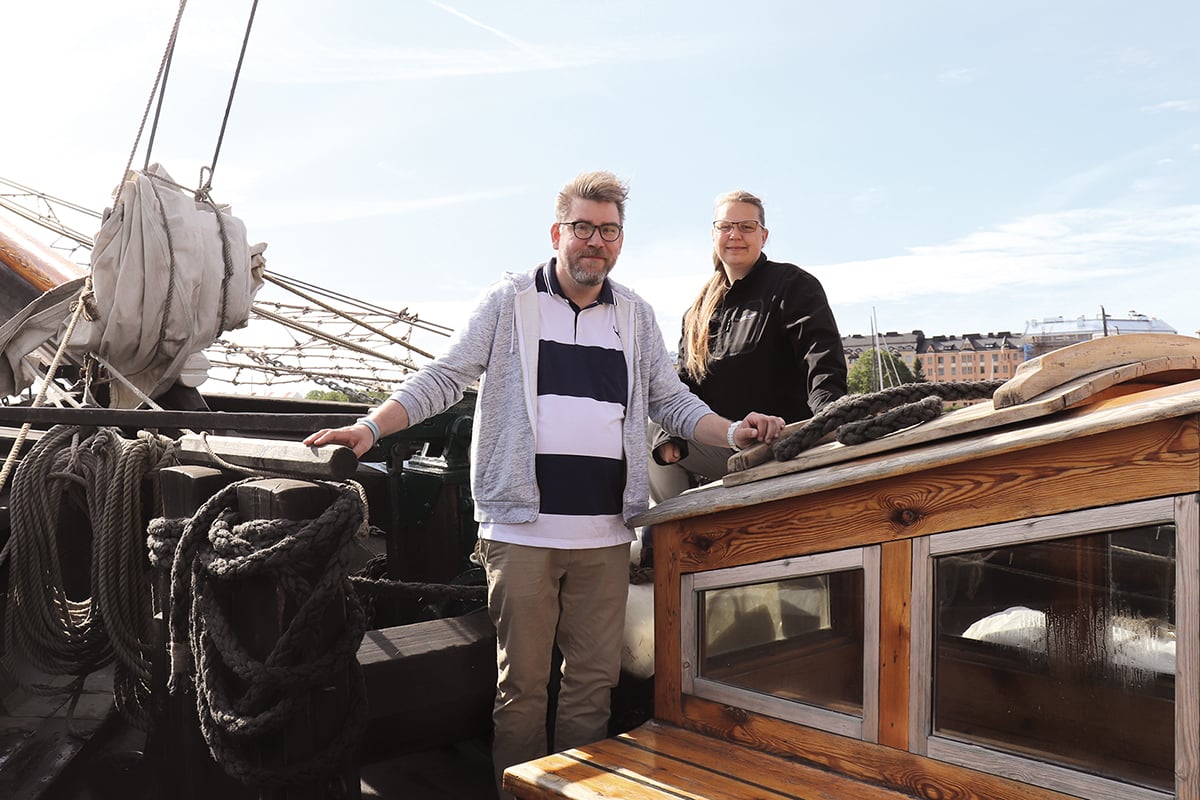
In the summer of 2019, Peter Snellman visited Helsinki and M.A.D. (now Nordic BIM Group Finland) with his colleague Elinor Sörlin. Photo: Nina Hedberg
"I still visit Finland from time to time to see my relatives. It's a pity that my mom never taught me the language when I was a child. Back then, there was a general belief in Sweden that bilingualism might be harmful. But surely I know the curse words!" he grins and starts listing.
Chatty and overly sympathetic Peter avows himself a hard-core nerd. Presumably, movies and especially comics come along. His admiration for technology and art may act as source code for his architect's career, too. BIM and Archicad are a natural extension for the path.
Coming up: Titanic II
We may not have to repeat the sad story of the most famous ship throughout the times – but it's going to get a superb sequel. In 2022, Titanic II will be launched, which is currently under construction. The replica honors its predecessor beautifully, even though the structure, engineering, comfort and safety are put to modern mold. For example, the vessel gets a broader steel hull, Wärtsilä engines, bow propellers and an additional safety deck.
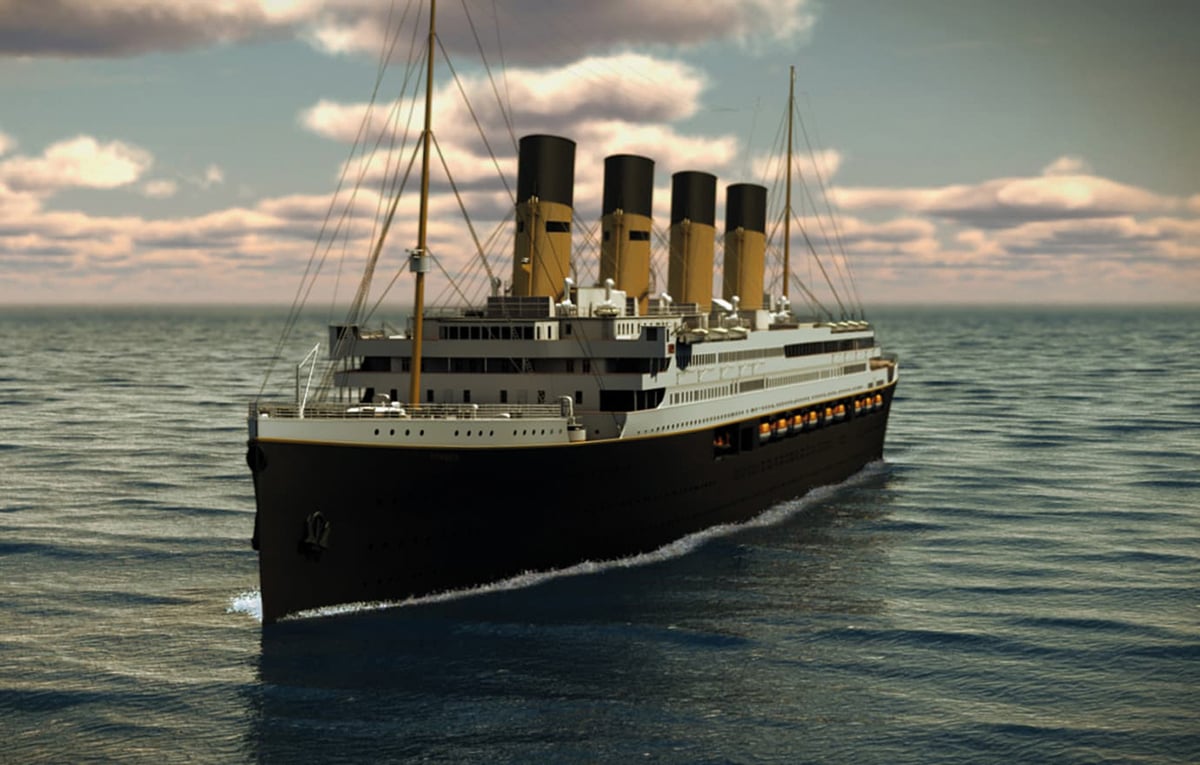
Titanic sank in 1912, just a few months before Stockholm Olympics. Soon it's going to have a descendant: the project Titanic II has lasted for nearly two olympiads. It's a true trial for Tillberg Design of Sweden.
At this point in the story, it's evident that the interior has Tillberg Design of Sweden's stamp. The project has taken its toll on the team, but there's land in sight. With time, the project will draw even broader public attention, which TDoS won't be offended by.
Lycka till!
As our schooner slowly slides to the Northern dock of Helsinki, it's time to wish Peter and his crew fair wind. After the last hand-waves of our Scanian friends, I'm left pondering how Tillberg Design of Sweden feels so mythical. Is that why I inevitably referred to the Vikings in the first place? Admittedly, both them and the Tillbergians are brave, equal, hard-working pioneers with genuine team power. Maybe their revenue logics differ slightly…
Simultaneously it feels like the legendary saga of this nearly sixty-year-old firm has just reached its prologue. So, BIM captain Peter, head towards the edge of the world and beyond!

